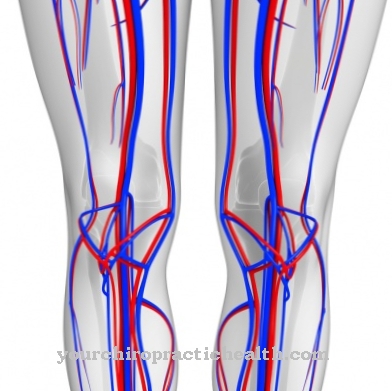An effective method of pain relief for a wide variety of complaints is Neural therapy. It is one of the naturopathic treatments and has not yet been covered by statutory health insurance.
What is neural therapy?

Neural therapy is used in naturopathy to alleviate functional body ailments. A local anesthetic (local anesthetic) is injected into certain parts of the body. In 1925, the doctor Ferdinand Huneke discovered that injecting a local anesthetic into a specific area of the tissue not only numbs pain, but can even heal it permanently. Together with his brother Walter, he researched this mode of action more closely and found out that the remedy worked via the vegetative nervous system.
Neural therapy is based on two assumptions: The interference field theory assumes that pathological events in the body (e.g. inflammation, injuries and scars) as interference fields or foci can irritate and affect other areas of the body. If these interference fields are not treated in the long term, symptoms can arise elsewhere in the body due to the permanent irritation.
The segment theory is based on nerve connections between the skin and the organs. Each segment of the body causes reactions in certain areas of the skin, so-called head zones. If the skin reacts sensitively in a certain area, this can be an indication of a disease of the associated organ.
Function, effect & goals
The areas of application of neural therapy are very diverse. It is mainly used by doctors who use neural therapy for these symptoms:
- Musculoskeletal pain
- Muscle and nerve pain
- Rheumatic complaints
- a headache
- Tinnitus
- dizziness
Neural therapy begins with a detailed medical history and physical examination. Some neural therapists also use injections to diagnose. If symptoms disappear immediately after such an injection elsewhere, this is called a second phenomenon. As a rule, treatment takes place in two steps: local treatment and remediation of the interference field. Before the local anesthetic is injected, the therapist scans the skin with his fingers to identify painful areas.
A local anesthetic is injected into these areas of the skin. The treatment must sometimes be repeated until the symptoms go away completely. There are also deep stab techniques where the anesthetic is injected into trigger points in the sore muscles.
Interference fields, e.g. B. Scars, are treated with multiple injections around the interference field. Possibly. the injection can also be placed next to vertebral bodies or in the area of larger nerve cords. Searching for interference fields is like detective work. Many fields of interference or chronic sources of inflammation are in the area of the paranasal sinuses, teeth, tonsils and ears, but also in the pelvis.
The effects of neural therapy have not yet been adequately researched; there are only a few studies that determine positive effects, but cannot make any general statements due to the small number of participants. Even doctors do not agree on the effectiveness, so the costs are not covered by the statutory health insurance and must be paid privately.
We owe the discovery of neural therapy to a coincidental malpractice which the doctor Ferdinand Huneke (1891 - 1966) made with his sister. He tried to inject her with the local anesthetic procaine to relieve her headache, but he accidentally hit a vein instead of the muscle. Her headache then went away in just a few seconds. Through further experiments he discovered that locally injected procaine also works. He injected a patient with the local anesthetic into a scar on her lower leg, whereupon her chronic shoulder discomfort disappeared in seconds. This phenomenon is named after him as the "second phenomenon according to Huneke". From these observations, Huneke concluded that symptoms in certain areas of the body can be treated by injections in other areas.
You can find your medication here
➔ Medicines for painRisks, side effects & dangers
In general, neural therapy is an effective method with few side effects. If the injection needle is inserted professionally, side effects such as irritation to nerves, organs and blood vessels are rare. At most, there may be a small bruise or a feeling of sore muscles. If the needle is set incorrectly, however, it can cause nerve damage to permanent nerve damage and a collapse of the circulatory system. Internal bleeding is also possible.
Therefore, the anesthetic should only be injected into the skin of people who have to take blood-thinning medication. Most often the narcotic procaine is used. but that can trigger allergic reactions, in the worst case an anaphylactic shock. In this case, an alternative agent must be injected. Minor side effects such as drowsiness, a little dizziness and fluctuations in blood pressure and pulse usually only last for a short time.
Neural therapy may not be used in the case of severe infectious diseases, immune diseases, corresponding allergies (especially to the anesthetic itself), or skin inflammation in the affected skin area. Patients with low blood pressure (hypotension) and a tendency to circulatory collapse should tell the treating doctor about this before treatment. If you are looking for a good neural therapist, you should make sure that he has completed thorough training, because doctors must have a sound anatomical knowledge in order to be able to inject the anesthetic in the right place.
























.jpg)



